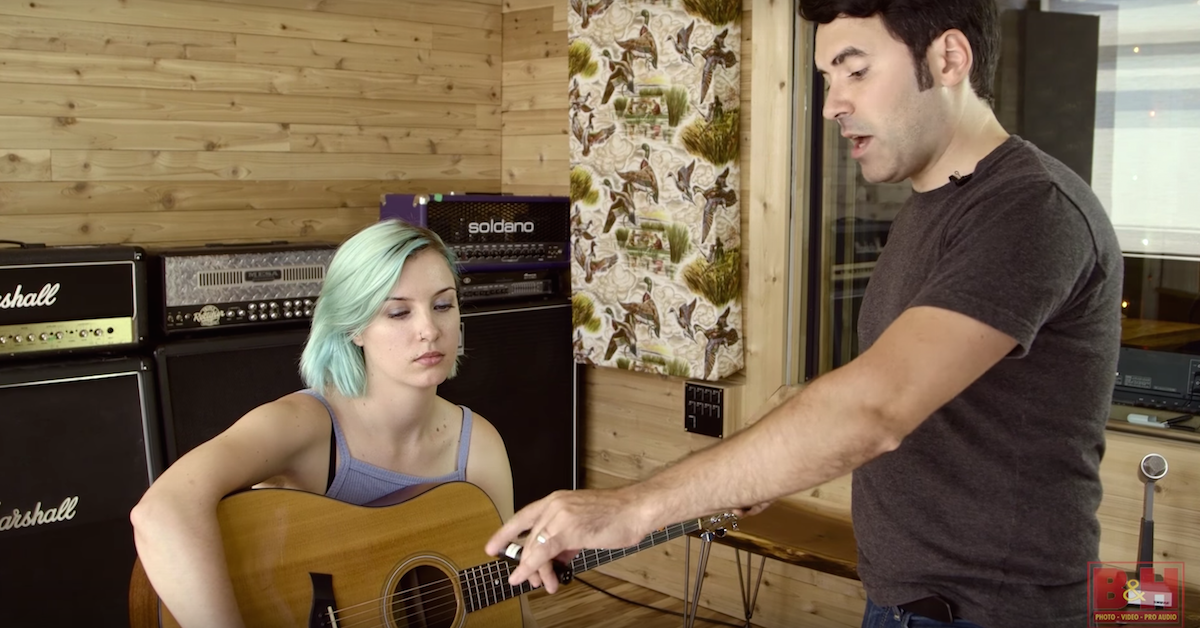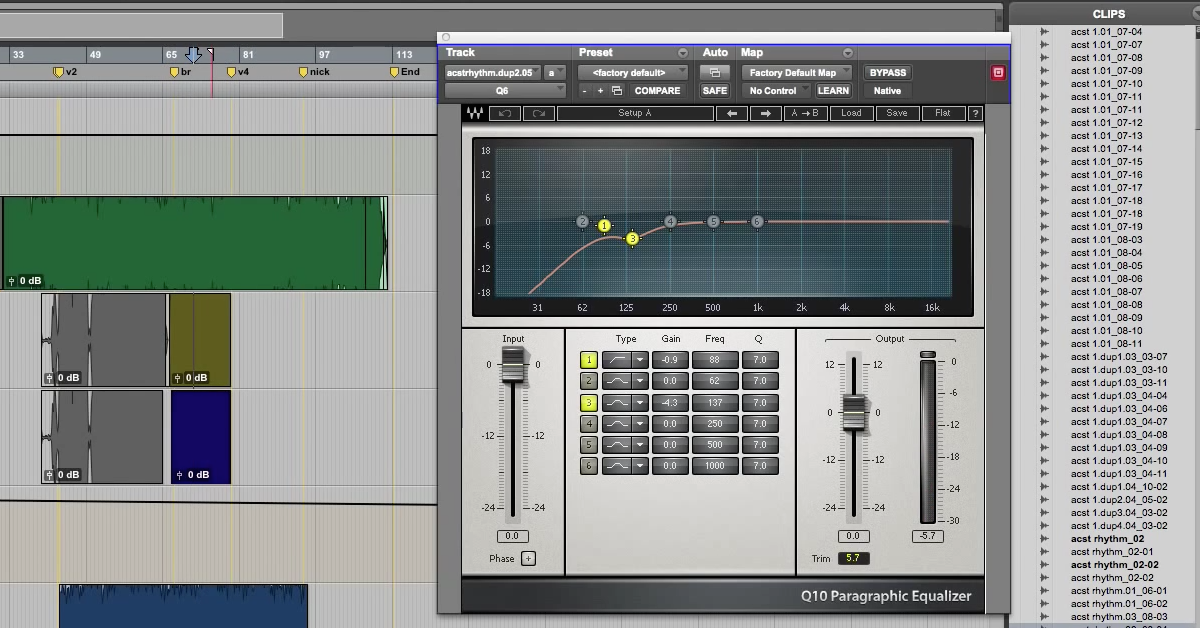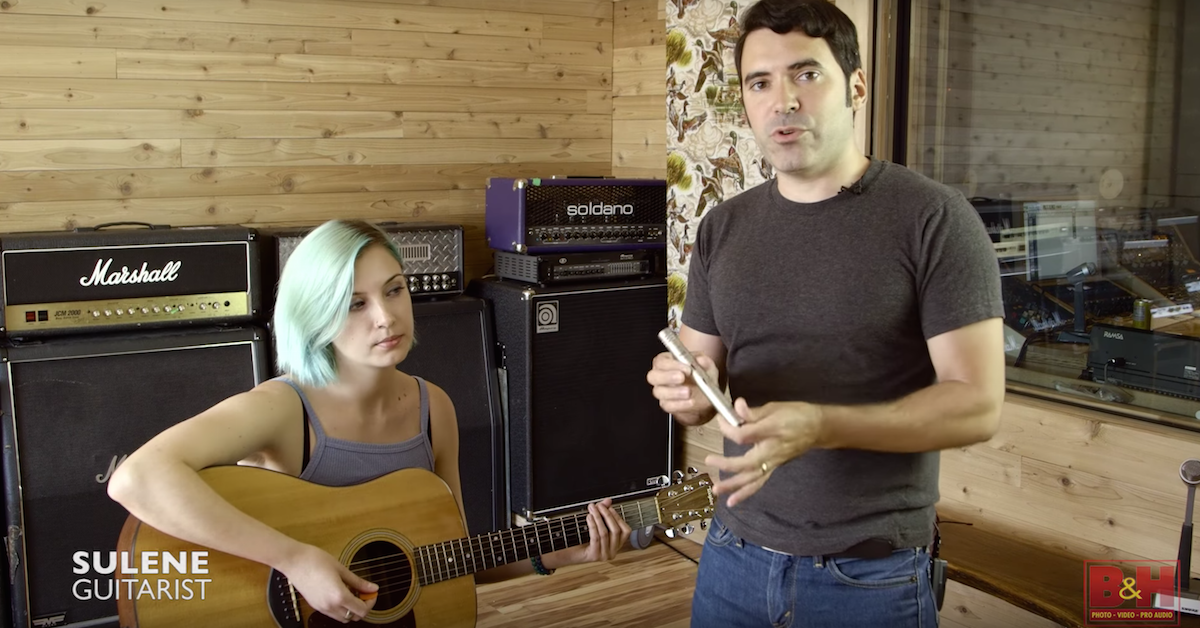8 Things to Consider for Recording Acoustic Guitar
Article Content
A lot goes into recording a great acoustic guitar sound and there are many variables to sort out when refining your tone. I’m going to discuss the factors that are most important in capturing acoustic guitar in the studio.
1. Body
The dreadnought is the most popular acoustic guitar size. Despite its popularity, however, the dreadnought is one of the trickier body sizes to record.
Dreadnoughts tend to be very pronounced in the bass, scooped in the mids, and ripe with high-end.
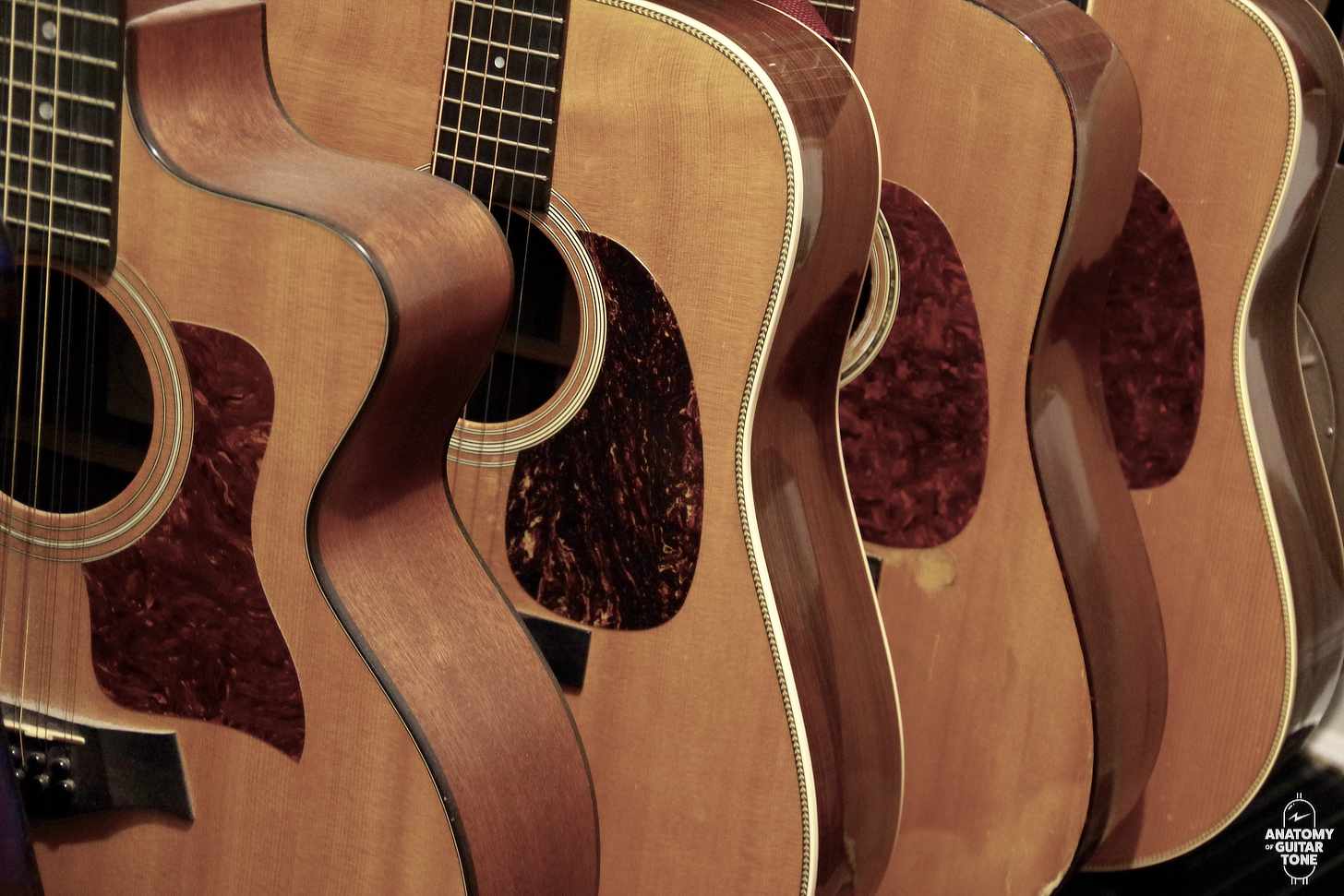
The Parlor or OM (orchestral model) tend to have more midrange and less bass build-up, and don’t sound as scooped. Because of their attenuated low end, they’re more forgiving with microphone placement.
Smaller acoustic guitar bodies have long been a secret tool for recording acoustic guitarists. Don’t just run to a dreadnought D-28 Martin — this model can be great for bluegrass but may not be the best match for other musical styles.
2. Picks
The gauge and material of your guitar pick also have a much bigger influence than you’d expect. The first page of EQ is the guitar pick. There have been times when I just couldn’t get a certain frequency from my acoustic guitar. Switching to a different pick completely solved the problem.
You may have to play a track with a pick that doesn’t feel as good as you’d like but sounds great on playback.
So before you reach for surgical EQ, try swapping out your pick. Try different gauges, shapes and materials.
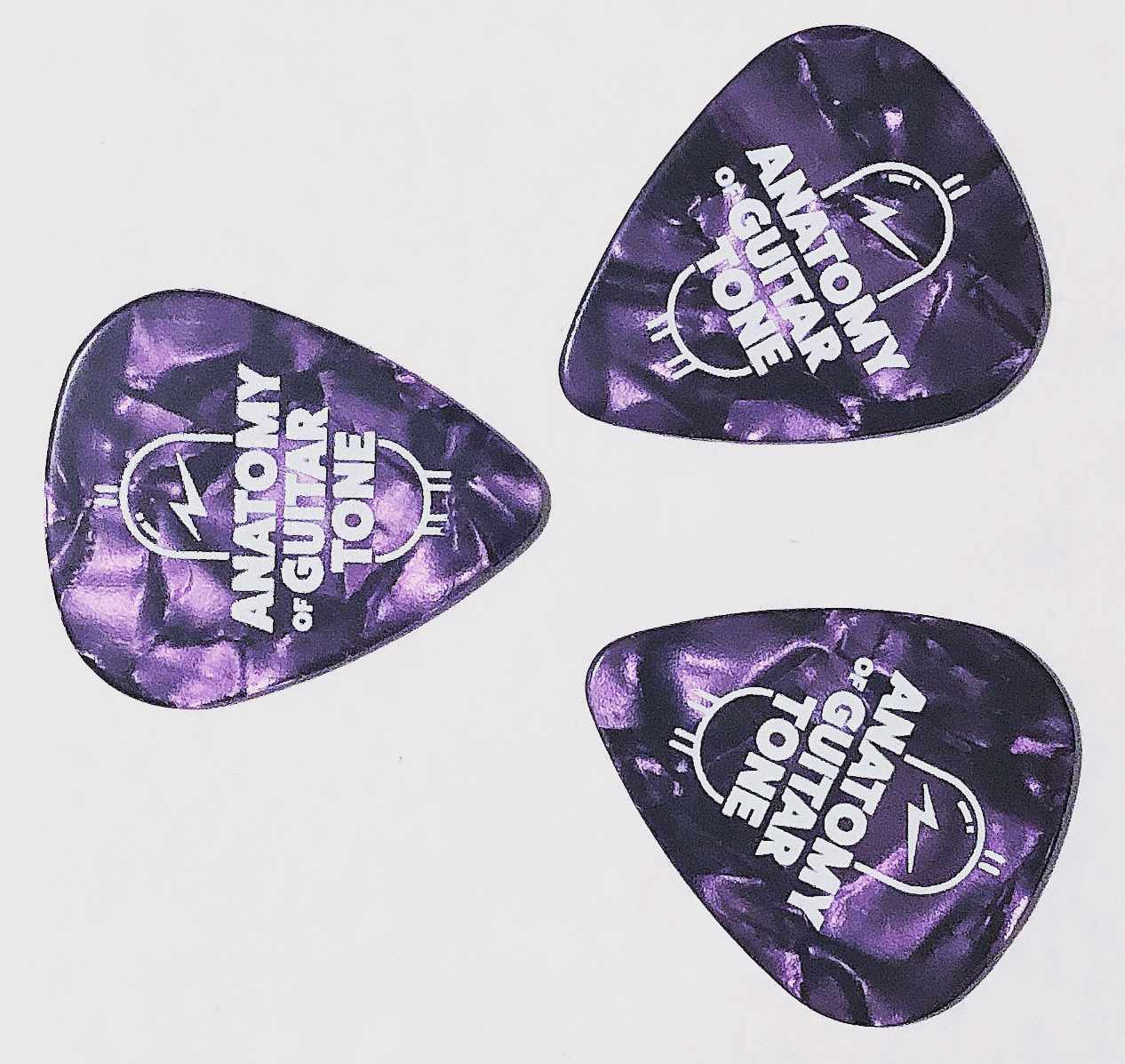
It’s also worth mentioning that pick technique also makes a huge tonal difference. A lot of guitarists get used to playing in the same area of the guitar. Moving the guitar pick (and therefore your hand) a little in either direction — toward the bridge or neck — can alter the sound considerably.
When recording acoustic guitar, focus on the sound of the instrument. Engineers get caught up in mics and preamps. They’re important, but if you don’t make sure things sound pleasing at the source, it will be an uphill battle. And one that may not be won even in mixing.
3. Strings
The gauge and material of guitar strings also alter the sound of the instrument.
Personally, I’m not a huge fan of light acoustic guitar strings. I like traditional medium-gauge strings. For me, the balance of bass to treble sounds right and it’s a sound I’m familiar with.
The lighter the strings, the less bass will resonate from the instrument. You may or may not like it — it’s personal preference. But it’s good to be aware that this can drastically alter your sound.
Swapping string gauges isn’t just something you should do willy-nilly, though. It may take a day or two for your guitar to adjust to the change in tension. This may require a guitar setup and could cause the neck to shift.
It’s good to consider your string gauge in advance of recording, not only to get the tone you want but also to prevent buzzing or a guitar that’s hard to play.
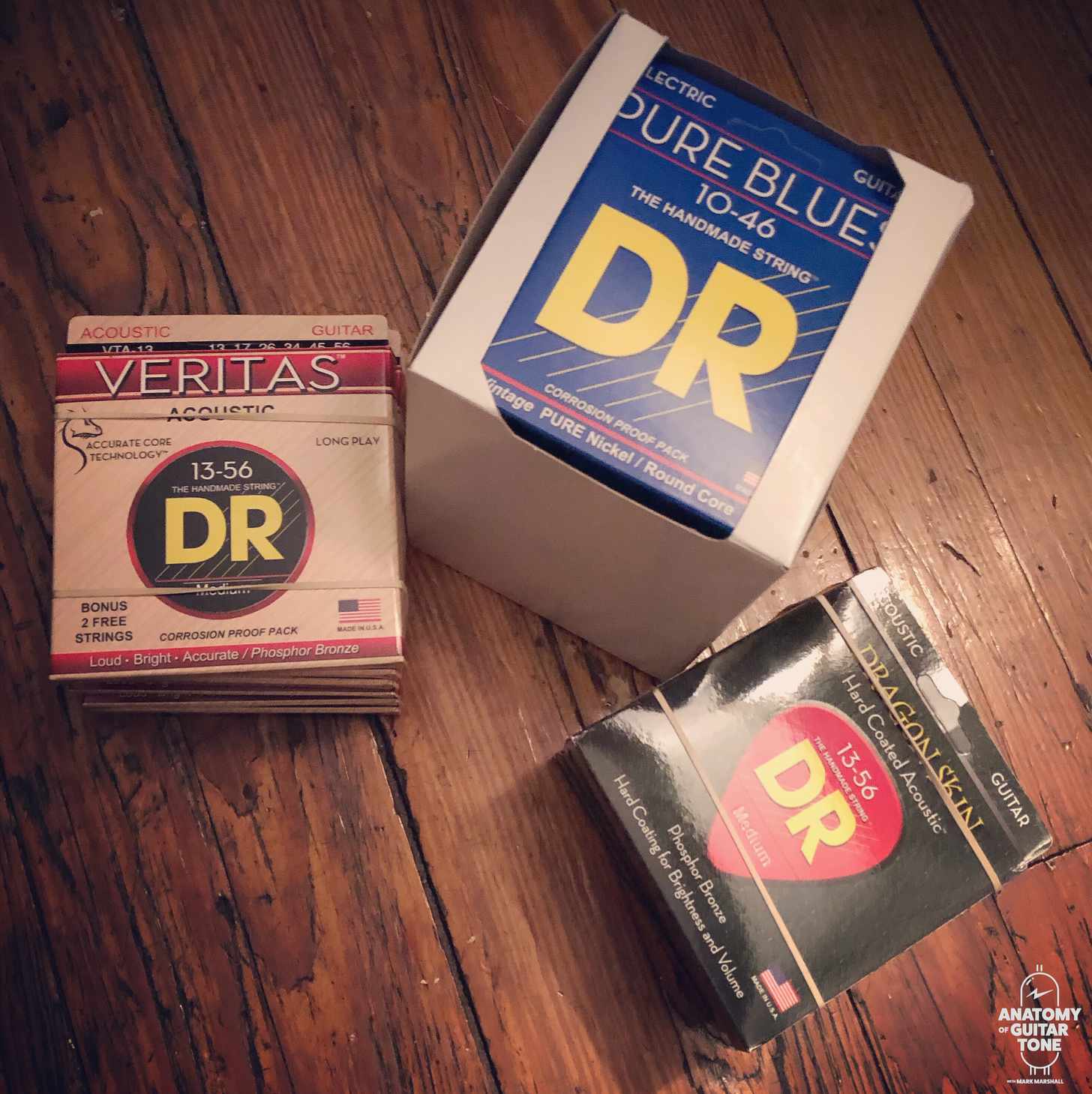
String Material
A number of materials are used in making guitar strings. The two most popular are bronze and phosphor bronze. You know what I’m going to say. They don’t sound the same. Yeah, I know, there’s a pattern here.
I’ve been using DR Dragon Skin Phosphor Bronze strings and I really like the tone. Some players prefer the old-school sound of bronze, though.
String Age
The common wisdom these days is that you should have brand new strings on a guitar when recording. I don’t feel this is necessarily true.
A lot of classic records were cut with old strings. It really depends on what kind of music you’re into and trying to capture. I don’t often record with a brand new set of strings. I play them for a few days before I start recording.
So don’t discard the option of old-string tone.
4. Microphone
There are a variety of mics you can use on acoustic guitar. I’m going to focus on the ones I really like.
I tend not to prefer the sound of small-diaphragm mics. Many engineers like them. But they’re a little too tight for my ears, at least for the style of music I like to record.
I favor large-diaphragm mics and ribbons. It’s hard to go wrong with a Neumann U87 or — my personal fave — a Neumann U67. I could go on about the ELA M 251 and many other mics. They’re very expensive, though, and you don’t have to drop that kind of bread to get a great acoustic guitar sound.
These days I’ve been using a Soyuz Bomblet, which comes in a little over $1,000. It sounds like a much more expensive mic. It has a very flattering sound. If you can’t have a fully stocked mic closet, I would recommend the Bomblet. It covers a lot of ground.
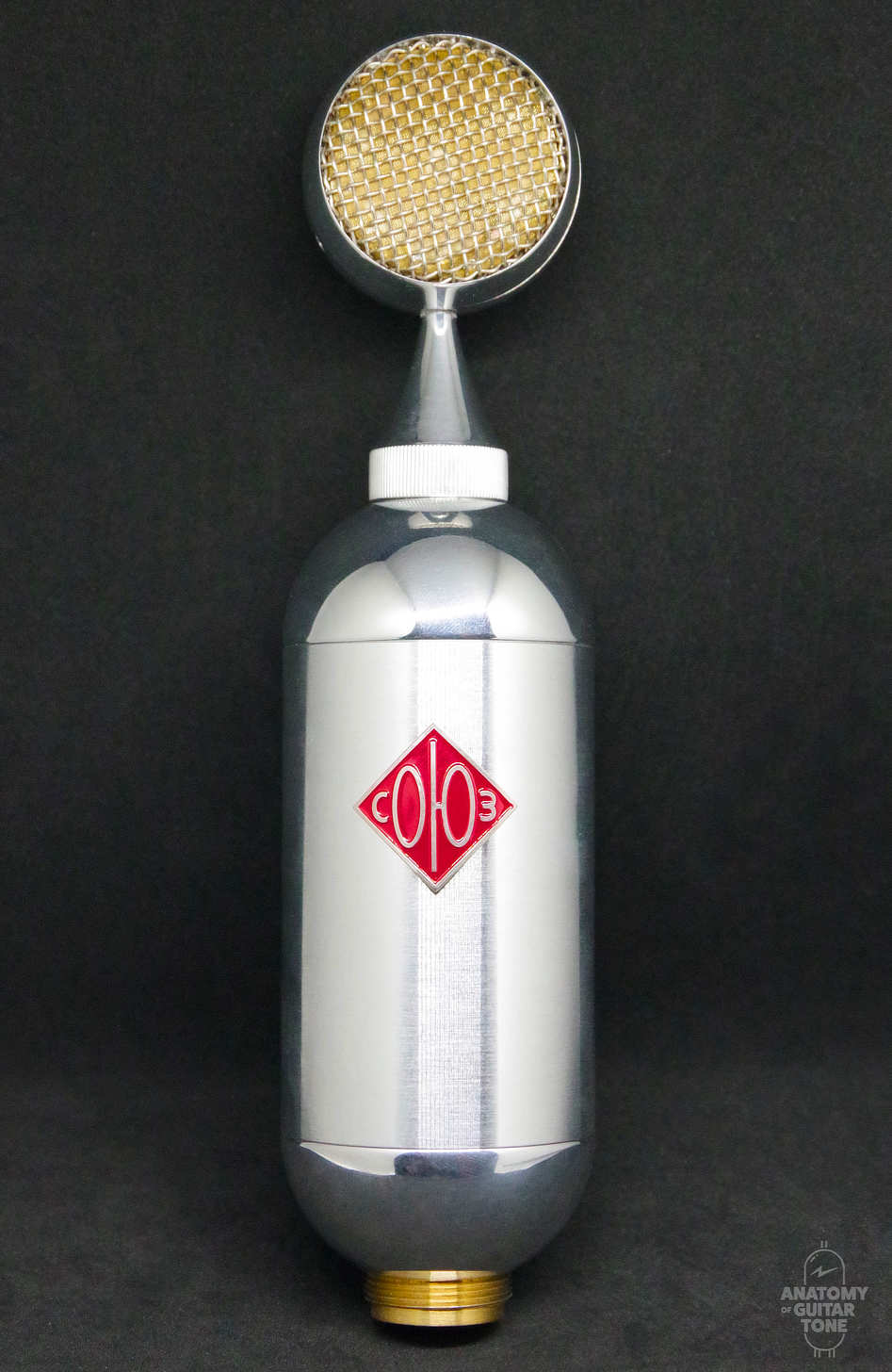
For ribbons, I love AEA mics. They sound great, and you can get one in the $1,000 range. I have an AEA A840. It has a very round sound.
Those are two mics that come in around the $1,000 range that will get you professional results. My advice would be to invest in mics like these. I find mics in lower price ranges to be less than desirable and sound cheap with a harsh high end. You don’t need to spend $3,000. But I feel you do need to spend more than $400. I would say a good target price range is in the $1,000 area.
Microphone Placement
There’s a lot of debate about the perfect spot to mic an acoustic guitar. The online consensus usually tends to be at the 12th fret, where the neck meets the body.
That can sometimes sound great, but do you want a blind dentist fixing your cavity? I don’t think so! You have to trust your ears.
I never just put up a mic and roll with it. I play and move the mic around. Honestly, I don’t care where the mic ends up, as long as it sounds great. Sometimes I’ll be really surprised about where it sounds right.
5. Space Diffusion
If you’re recording in a project or home studio, do yourself a favor and get an sE Electronics RF Space Diffuser. It’s going to greatly help not only your vocal sound but also your acoustic guitar tone.
Very few project or home studio environments have great acoustics. These spaces tend to have a lot of ambient noise that can bleed into the mic. For instance, the fan of a computer, which can really become present when you compress an acoustic guitar.
The sE Space allows you to create a sort of isolation booth. This is incredibly useful with acoustic guitars.
My studio isn’t the best-sounding room. Tracking acoustic guitar there has been an issue for me. Not only because of computer fan noise but the acoustic reflections in the room. It just didn’t sound pro.
But with the sE Space, I can get tighter cleaner acoustic guitar tones. It’s not as clean as an iso room, obviously, but it takes a lot of the room out of the equation. I find myself being able to move the mic back further and get a more natural sound.
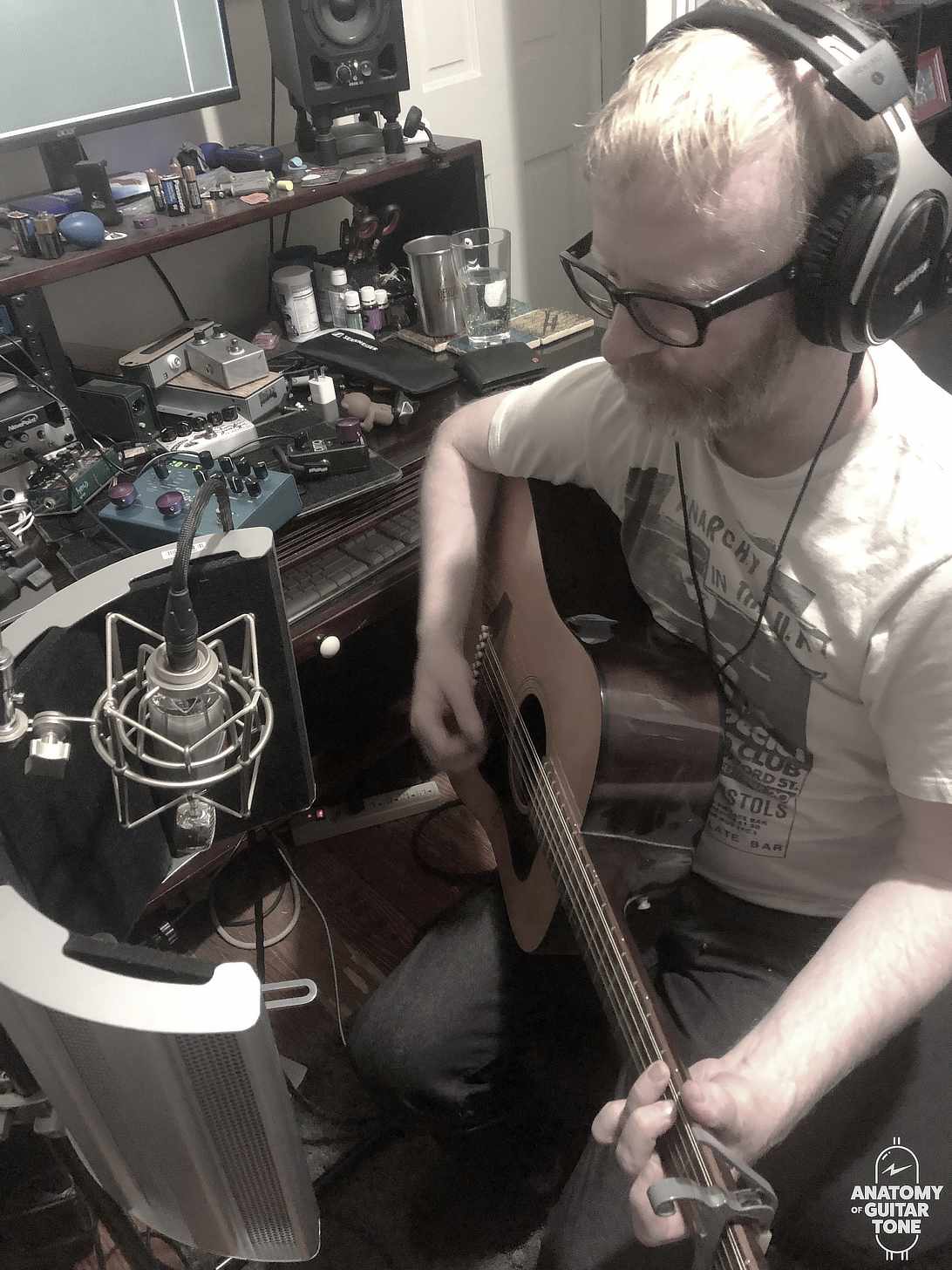
6. Signal Chain
I think mic preamps are a lot like mics in the sense that cheap ones just never sound good. There is just something special about a Neve, an API, or a Pendulum.
I would recommend getting two channels of high-quality mic preamps.
I have a couple of API320 mic preamps I love. I also have a UAD Apollo that has classic mic pre emulations on it. They actually sound great and I use them a lot! This could be a more financially practical route.
Compressors
I like compression on acoustic guitar. There — I said it! Some people hide their love of compression on acoustic guitars. Not me. Slapping an LA-2A onto an acoustic guitar will always make me happy. Ok, maybe not always, but often.
I’m old-school when it comes to getting sounds. I like to track with the sound I’ll send to mixing. I don’t leave a lot of questions for later.
It may take you some time to learn how to use compression, but it’s worth it. Tracking great sounds at the source will always make your mixes better.
Tape
I’m a big fan of tape on acoustic guitar. It’s the sound I grew up with. My studio isn’t big enough to fit a real tape machine so I have to use a plugin, which for me is the UAD Studer A800. It just mellows out the guitar in all the right places, which is important when recording digitally.
EQ
I find some people are afraid to add EQ. I’m all in favor of trying to get the sound as close as possible at the source. But sometimes you need that extra help for a specific sound.
I tend not to use EQ to fix problems unless there is no other option. I use it to enhance and embellish the tone.
If the guitar isn’t sounding right, I try moving the mic, try a different pick or a different mic. I want to solve the problem at the source.
When the source sound doesn’t have any problems and I just want it to sound enhanced, then I will add EQ. I do whatever it takes to get the sound I’m hearing in my head.
That said, if I have to add a lot of EQ, I will. My three favorite EQs for acoustic guitar are the Neve 1073, the Helios, and the API 550A.
If I need to get surgical, I use the FabFilter Pro Q 3.
It’s not uncommon for me to put a high-pass filter on at the preamp or EQ. That low end can get muddy, and the acoustic guitar doesn’t usually need to be that wide. I’m careful about this, though. Depending on the part or the song, I may want some low end in there. So don’t blindly cut. Listen to the guitar, the guitarist, and the song, then adjust. Always listen and never trust your eyes.
The Beatles would use a pretty steep high-pass filter on guitars, especially on electric guitars.
7. Context
A small but useful tip is to make sure you’re playing the song you’re recording when getting sounds. I’ve seen guitarists check a sound when playing a song or riff in a different key. You want to be playing in the key of the song you’re recording.
I don’t want to be a curmudgeon, but it drives me nuts when guitarists start playing their greatest hits when checking. Play the part exactly how you’re going to play it.
Overtones and various other sounds may only be present in certain keys and registers on an instrument. The only way to test is to hear sounds in context.
8. Headphones
When you have to engineer yourself, I find it extremely important to have great headphones. You can’t be in a separate room listening to the acoustic guitar, can you? Not currently a skill of the human race.
If you have open-eared headphones, the bleed from your guitar will mask what is being recorded. You will hear a combination of the sound from the headphones as well as the live sound.
Even with closed-ear headphones, you will still experience some bleed. But much less. Headphones are going to be your lifeline when engineering yourself. For this reason, I don’t cut corners. I use Shure SRH1540 closed-ear headphones.
They’re comfortable and sound really great. They represent the sounds well. I’m not surprised at what I’m hearing back when I play back a take on monitors. Don’t compromise here.
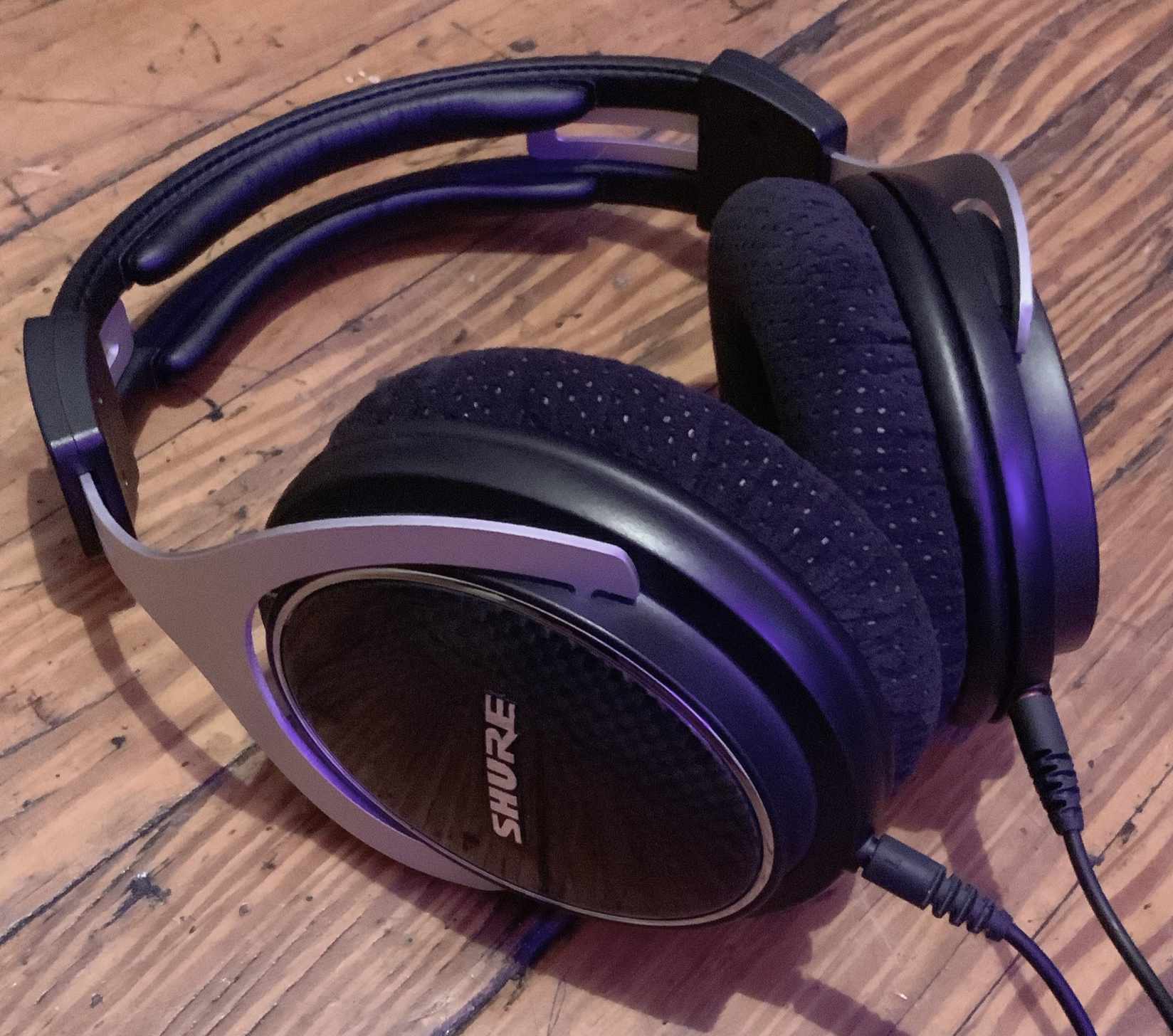
There’s a lot of trial and error involved in getting great acoustic guitar sounds. The important thing to remember is to keep experimenting until it sounds right. Don’t assume it can be fixed later. Take the time to lock down a great tone and try all the variables. The end result will be improved immensely with more attention on the front end.




